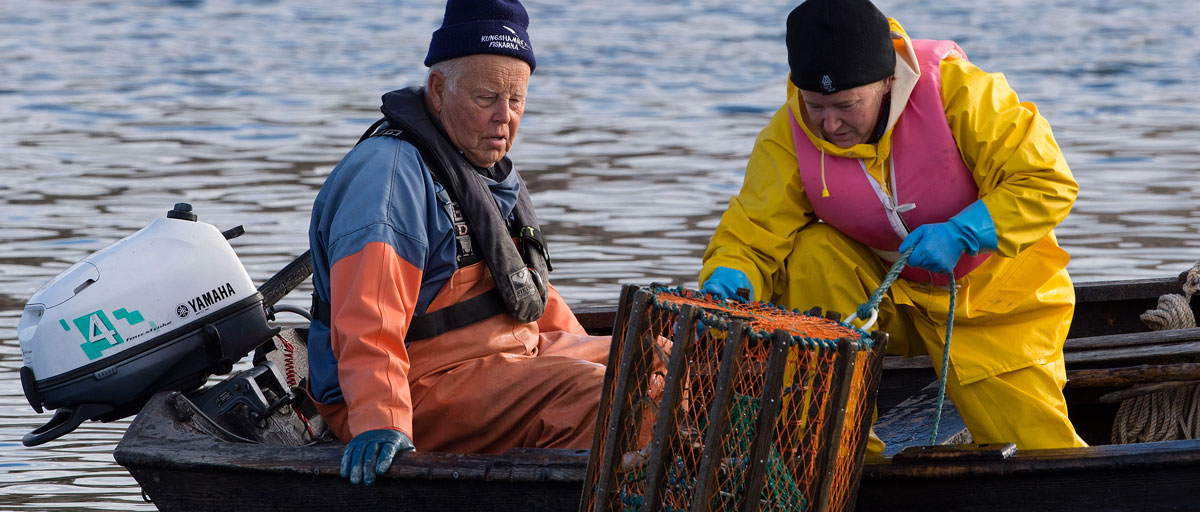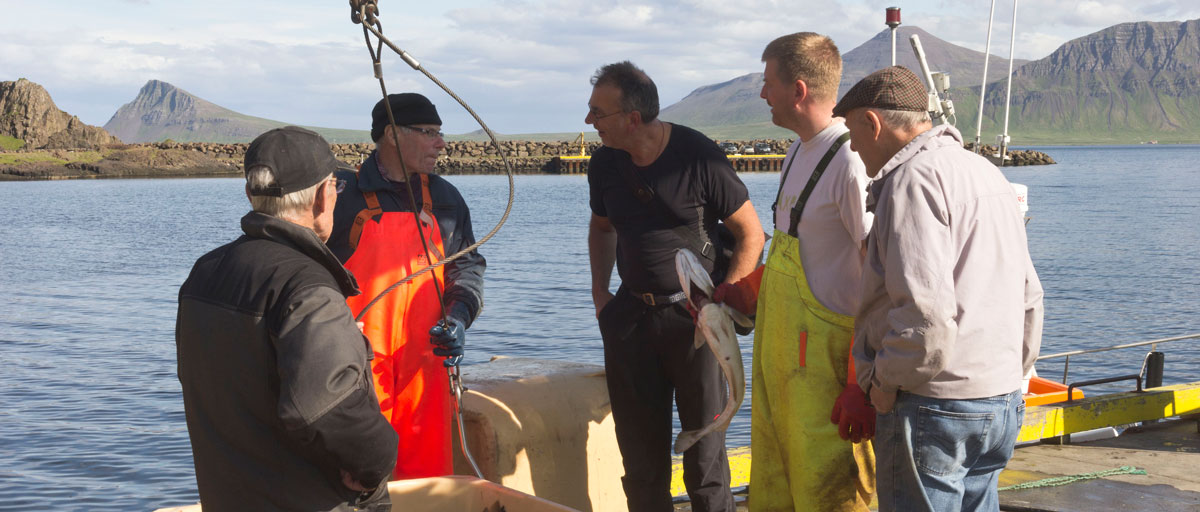
Globalizing trade in local fisheries is a game-changer for local politics. Abrupt changes in price can lead to overexploitation and collapse. A new study suggest in local markets small populations and in global markets large populations are most at risk of being overharvested. Photo: A. Maslennikov/Azote
Bildtext får vara max två rader text. Hela texten ska högerjusteras om den bara ska innehålla fotobyline! Photo: B. Christensen/Azote
FISHERIES AND THEIR MARKETS
Modeling the seafood market puzzle
New fishery model reveals the need to manage relationships between market influences, whether it is local or global
- New study in Environmental Economics examine in what seafood price driven by changes in different market structures influence fishery dynamics
- Results suggest in local markets small populations and in global markets large populations are most at risk of being overharvested
- Study highlights that in today´s globalized fisheries models cannot afford to ignore the effects of price and market structure
Global seafood demand has been on the rise for some time. The UN Food and Agricultural Organization (FAO) reports that 40% of all seafood is traded internationally, leaving it as one of the most traded commodities across all exports. At the same time, the FAO reports that 30% of the world’s fish stocks are overexploited. Some 60% remain fully exploited.
With a global market for seafood, it is imperative to understand the complicated route a fish may take to get from the sea to a table. This means taking into account market, price, fish stock, and fish behavior. A better understanding of this can help illustrate what management strategies are needed to ensure healthy fish stocks.
A new study in Ecological Economics by centre researchers Laura Elsler, Maja Schlüter and other colleagues, aims to do that. They explore how fishery dynamics are influenced by markets, with characteristic price structures. They do so by developing a bio-economic mathematical model that considers fisheries in a globalized context.
The authors ask two questions: how do different price structures that characterize local, multi-level and global markets affect fisher income and fish populations in a multi-species fishery? And, under which conditions do a change in market structure, such as from local to global markets, lead to a collapse of fish populations?
A bio-economic fishery model
While models have long been used to explore natural resource and market dynamics, few have taken in account price and market structure.
What stands out about the model developed by Elsler and her colleagues is that it more accurately considers fishers behaviour when markets change. For example, a fisher might continue to fish an overexploited population that is difficult to catch if it will positively impact their income.
Elsler explains, “we developed a bio-economic fishery model to assess different market structures; global, local and multi-level markets; and their effect on income and resource exploitation. The structures we described for the local and global markets are through price patterns that have prevailed in fisheries worldwide. We introduced a multi-level market structure in which the fishers can concurrently divide the commercialization of their catch.”
Future fisheries’ management
Through their findings, authors highlight four key findings:
First, cross-scale interactions driven by a change from local to global markets can be smooth or abrupt. Abrupt changes because of radically new price structures lead to overfishing and even collapse.
Second, it is no secret fish stocks will only remain stable if species’ population growth is larger than its catch rates. The authors’ results heavily relied on the stability of the ecosystem. Therefore, they recommend that a management should focus on ecosystem variables that are stable, such as growth rate, instead of variables that tend to fluctuate, such as prices.
Third, the model allows the researchers to understand how multiple species interact with increasing global prices. For instance, “An increase in global prices of one species leads to population decline or even collapse. Globalization of markets may offer relief for overexploited fisheries, but leads to serial exploitation of stocks of the same species.”
Schlüter adds “This suggests that with continuing globalization, the fate of fisheries, without regulation, will depend on how fisheries develop in relation towards each other and may explain the apparent contrast of earlier studies where access to trade leads to either collapse or recovery.”
Finally, the authors show that at the local level, fishing income influenced by either a low effort or low population levels is beneficial in local market. In other words, to effectively manage a fish species, mangers should focus on local enforcement and strengthen local market structures. In a global market context, managers should look to longer term commitments when it comes to catches, as well as rules that preserve sustainable incomes for fishers.
In reality, Elsler summarizes, one process, such as globalization of trade in seafood, leads to multiple, desirable or undesirable outcomes in fisheries.
“Moving from universal, simplistic, and linear thinking about these processes towards a more complex understanding of natural resource management will need to consider the broader, dynamic picture when it comes to management.”
Methodology
The authors developed a mathematical bio-economic fishery model using open access fishery data that considers: population; harvest; market prices; market structure at multiple levels, including global; and fisher income. This ‘system’ under analysis allowed the researchers to complete a systematic analysis of the interplay of different markets. The researchers also include fishers’ behavior through a “switching” function in the model that allows them to examine what happened to exploitation patterns when fishers choose between two species.
During analysis, the researchers looked at the bio-economic equilibrium, and use systematic behavior resulting from fish supply and price conditions of a fishery with multiple export markets. More specifically, they analyze: income and fish populations in multi-level markets; income in different markets; and fish populations in globalized markets.
Elsler, L.G., Drohan, S.E., Schlüter, M., Watson, J.R. and Levin, S.A., 2019. Local, Global, Multi-Level: Market Structure and Multi-Species Fishery Dynamics. Ecological Economics, 156, pp.185-195
Laura Elsler is a PhD candidate working to re-think fishery management models. She works primarily with mathematical models that are grounded in case studies, and is interested in bridging between social and ecological systems, local and global scales, in particular on fisheries interactions with trade and markets.
Maja Schlüter is an associate professor whose research focuses on analyzing and explaining the co-evolutionary dynamics of social-ecological system with the aim to develop SES theory. She supervises a number of graduate and post-graduate projects, including Laura Elsler’s PhD project.










